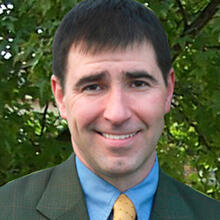It may simply be a sign of my own dubious discipleship, but I always feel Thomas gets a bad rap. It’s not like the other disciples leapt eagerly to belief. Jesus’ appearance grounded their faith.
More, however, than giving Thomas his due, I think there is something going on in his story that is missed by the doubter/believer shtick. He doesn’t just demand his own personal appearance for the empirical solution of his doubt. He insists on the link between the crucifixion and resurrection.
There is something here about the integrity of the Pascal Mystery and, in this season, the integrity of Easter faith. The dramatics of our liturgies can script us out of confrontation with the demanding drama of salvation. Our cries of “Alleluia, death is no more,” “He is risen” and trumpet-charged “This is the Feast of Victory” can ring so hollow. Yes, of course, I believe all of this, but do I really believe in it?
Caravaggio’s portrayal of Thomas’s encounter with the risen Christ conveys the challenge of the resurrection well.

The scene has a claustrophobic intimacy. Their faces close, Christ’s hand draws Thomas’ filthy finger to probe the wound on his side. Thomas and the other disciples are portrayed as pruriently inquisitive. But the hands make it seem almost as if Jesus must pull him to actually touch.
Christ draws us to confront his disturbing victory. Look. Feel. Death really is overcome. You have nothing to fear.
This is not particularly calming. This salvation is an unsettling gift.
"Look. I stood against the powers of the mighty Empire and the righteousness of the Authorities of religion. I was powerless against their denunciation and violence. They hung me as an example of what they will do to any who dare oppose them. In my resurrection, you are free to do likewise."
Jesus’ hand conveys the awful grace at work in all aspects of our lives. Pulling us, urging us to love as he did, to dash ourselves in struggles that seem as pointless as the cross. Confronting us with the excruciating possibility that salvation can come to the many struggles we so anxiously seek to shrug off.
This challenges the Neo-pelagian heresy so deeply rooted in our faith. If we would only dare believe, then Easter freedom would be ours. Alas, we don’t. God’s victory is defeated in our hesitance. But grace doesn't work that way. It’s always there, working to free us even as we wallow in hesitation.
With Thomas we ask the right question. And with Caravaggio's Thomas, perhaps we hesitate to accept the answer. Thank God it’s not simply up to us.








Wiki for more on Thomas: http://en.wikipedia.org/wiki/Thomas_the_Apostle
From that:
Thomas speaks in the Gospel of John. In John 11:16, when Lazarus has just died, the apostles don't want to go back to Judea, where Jesus' fellow Jews had attempted to stone him to death. Thomas says bravely: ''Let us also go, that we may die with him'' (NIV).
Speaking of Thomas however in this non-canonical sense, I am struck also by parts of the gospel in his name - even though discredited and adjudjed as 'gnostic." But if we can meditate on a non-canonical interpretation of Caravaggio's, perhaps understanding some of "his" theology is likewise ground for insight.
Do I open myself for lecture or inquisition on that?